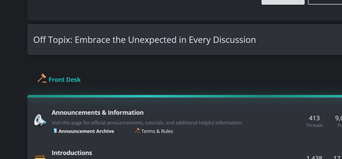- Thread Author
- #1
On Tuesday, both CNN and Reuters introduced paywalls, marking a shift from the recent trend of major news outlets stepping away from paid content.
Why it matters: With large online audiences, these platforms see minimal risk in charging their most dedicated readers for access.
The reality: The traditional media ad market slowdown has made it harder for news sites to sell out their ad inventory. Trading millions of ad impressions for the possibility of steady subscription revenue may prove to be a smart financial move.
By the numbers: CNN attracted an average of 159 million unique visitors monthly across mobile and desktop in 2023, making it one of the most popular news platforms. Reuters’ consumer site reaches up to 50 million unique visitors each month.
Zoom in: Both companies will offer a limited number of free articles before prompting users to subscribe. CNN’s subscription will be priced at $3.99 per month, while Reuters will charge $1 per week.
Notably, both CNN and Reuters have already been gathering user data via registration walls that require email addresses for free content access. These data collection strategies help publishers fine-tune subscription pricing models.
The big picture: The shift toward more affordable paywalls, in contrast to premium sites like The New York Times, reflects a broader trend within the industry toward flexible subscription models.
• Last year, The Atlantic adopted a more dynamic paywall approach.
• Gannett, the largest U.S. local newspaper chain, began easing restrictions on its paywall in late 2022 to boost ad revenue.
• Time magazine removed its digital paywall entirely, opting for ad-supported content to expand its audience.
Source: https://www.axios.com/2024/10/01/reuters-cnn-website-paywalls
Why it matters: With large online audiences, these platforms see minimal risk in charging their most dedicated readers for access.
The reality: The traditional media ad market slowdown has made it harder for news sites to sell out their ad inventory. Trading millions of ad impressions for the possibility of steady subscription revenue may prove to be a smart financial move.
By the numbers: CNN attracted an average of 159 million unique visitors monthly across mobile and desktop in 2023, making it one of the most popular news platforms. Reuters’ consumer site reaches up to 50 million unique visitors each month.
Zoom in: Both companies will offer a limited number of free articles before prompting users to subscribe. CNN’s subscription will be priced at $3.99 per month, while Reuters will charge $1 per week.
Notably, both CNN and Reuters have already been gathering user data via registration walls that require email addresses for free content access. These data collection strategies help publishers fine-tune subscription pricing models.
The big picture: The shift toward more affordable paywalls, in contrast to premium sites like The New York Times, reflects a broader trend within the industry toward flexible subscription models.
• Last year, The Atlantic adopted a more dynamic paywall approach.
• Gannett, the largest U.S. local newspaper chain, began easing restrictions on its paywall in late 2022 to boost ad revenue.
• Time magazine removed its digital paywall entirely, opting for ad-supported content to expand its audience.
Source: https://www.axios.com/2024/10/01/reuters-cnn-website-paywalls


